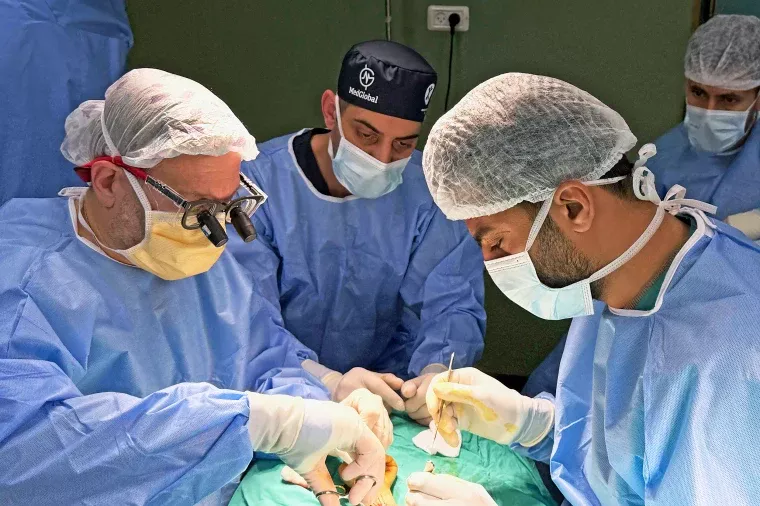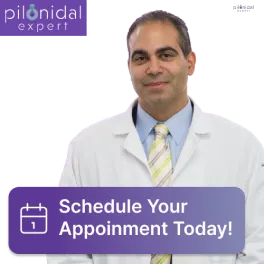If you’ve ever had a pilonidal cyst, you know what a pain—and potentially confusing —they are. Perhaps it began with a little swelling near your tailbone. Perhaps it turned red, swollen, or even hurt. And now, you’re looking to see if it will go away on its own—or if this is something you’re going to be living with for a while. Pilonidal cysts are more common than you would think, and though they can feel like a one-off inconvenience, they tend to have a way of reminding you they exist. So let’s discuss what they are and why they form, and if they ever truly disappear and how a colorectal surgeon pilonidal cyst can help.
So, what is a pilonidal cyst anyway?
Pilonidal cyst A pilonidal cyst is a small hole or tunnel in the skin, usually at the very top of the buttocks, where the buttocks separate, near the tailbone. This is often due to hair and other skin debris becoming trapped under the skin, leading to irritation or infection. These cysts may begin as small and painless but can subsequently become infected, grow rapidly, become painful and fill with pus.
Others experience only one in a lifetime. Others battle recurrent cysts or chronic inflammation there. Pilonidal cysts can develop in anyone, but they are more common in young adults, particularly men, and in people who sit for prolonged periods — drivers and office workers, for example.
Do pilonidal cysts go away on their own?
A pilonidal cyst may also shrink or appear to go away on its own — particularly if it isn’t infected. The swelling may have receded, the tenderness may have evaporated, and you may very well be thinking it’s all healed up. But abated doesn’t always mean gone for good. Most cysts will remain under the skin but some are so deep they cannot be felt and they lie under the surface of the skin.
In a few instances, extremely small cysts may disappear on their own without treatment. But once the infection takes hold, the cyst will probably not go away on its own completely. Infections can make the area more painful and can result in abscesses that may require drainage or medical care.

What if a pilonidal cyst is left untreated?
And if you let an infected pilonidal cyst be, it isn’t likely to improve on its own. In fact, it can get worse. The cyst may increase in size, get more painful, and ultimately rupture. If and when it does, the pus may drain and the swelling may go down, but more often there is a pocket under the skin.
Over time, untreated by colorectal surgeon pilonidal cyst near me pilonidal disease can progress to chronic draining sinuses — little holes in the skin that flow with fluid or blood. This only leads to further discomfort and the area becomes more susceptible to repeated infections. The longer it’s neglected, the more complex it can get to treat.
Can pilonidal cysts be treated at home?
If a pilonidal cyst is not infected and is just a small bump, warm compresses and gentle cleaning can reduce pain. A warm bath may help make the area feel better and decrease inflammation. Keeping the area dry and clean and avoiding prolonged sitting can also be beneficial.
But as so on as you begin to note the signs of infection — pain, redness, swelling, and/or drainage — it’s time to see a medical professional. Your cyst won’t go away with home remedies. They could point to a quick fix, but definitely require medical treatment to avoid complications.
When should you go see a doctor for a pilonidal cyst?
If your pilonidal cyst is painful, enlarged, draining pus, or recurring, you should absolutely go to the doctor or pilonidal cyst colorectal surgeon. They can determine if the cyst should be drained or removed surgically. And some people may require antibiotics if there is a documented infection.
If the cyst is infected, a procedure known as incision and drainage is typically the first step. It’s a straightforward outpatient procedure in which the doctor numbs the area, makes a small incision and drains the fluid. They offer swift relief — but may not solve the problem for good.
For cysts that are chronic or recurrent, excision of the cyst and the sinus tracts may be required. This can minimize the risk of the cyst returning, and although it’s not a surefire cure.
Do pilonidal cysts recur after treatment?
Yes, they can — pilonidal cysts can come back after treatment. That is one of the most aggravating things about this condition. New cysts in the same location are sometimes seen after successful drainage or surgery. The risk of recurrence will vary based on things like your anatomy, hair growth patterns, hygiene and how well the area heals.
After they’ve been treated, doctors often suggest strategies to help avoid a recurrence. That can mean hair removal on the impacted area (by either shaving or laser treatment), better hygiene, avoiding sitting for long periods and wearing loose clothing. These measures won’t necessarily prevent another cyst, but they can help minimize the chances.
Is there any role to surgical remove all hairs to achieve infection-free pilonidal at any time in the life time of the pilonidal patient?
In some cases, yes. If you have it surgically removed and the area heals properly, you may never get another one. Many can go on to cyst-free lives after treatment — if they practice lifestyle changes that relieve pressure or irritate the tailbone region.
But for some, it turns into something more chronic. Some people can have a flare-up a few times a year or every few years, particularly if their job requires prolonged periods of sitting. With timely monitoring and early treatment of new bumps or discomfort, things needn’t get serious.
What is the long-term outlook for someone who has pilonidal cysts?
The majority of people with pilonidal disease are able to go on and lead normal lives. It’s painful, often it’s annoying, and nobody wants to look at it. With the proper care and a bit of patience, flare-ups are manageable and, in some cases, resolvable.
The key is not to ignore it. The sooner you catch it, the more manageable it is to treat. If it’s your first cyst, or your fifth, don’t wait to find help. It’s worth it for your comfort and your health.
Conclusion
Pilonidal cysts don’t just disappear on their own — and when they do become infected, which is common, they always return. Although some mild cases of the condition clear up without treatment, most cysts that are infected or keep coming back require treatment. The good news? Given the proper care, however, pilonidal disease can be treated — and often resolved once and for all.








